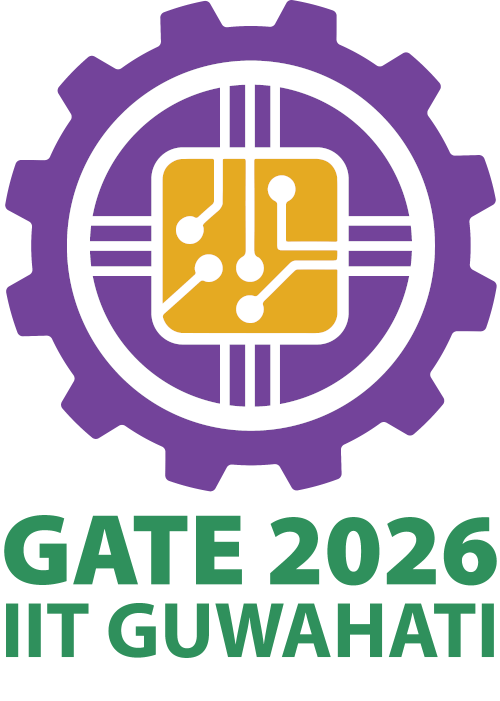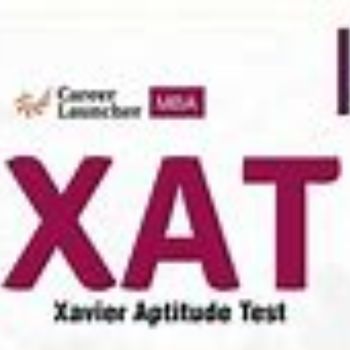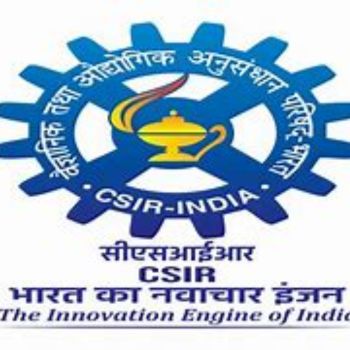Ph D in Statistics is a doctoral-level program that focuses on statistical theory, helps with research that is based on data, and provides better at models, data analytics, probability, reasoning, and computing statistics. The course duration generally ranges between 3 - 5 years, depending on the research and the student.
The basic eligibility criteria for the PhD in Statistics is that the candidate must hold a master’s degree from a recognized university with an aggregate of 50-55% marks. The admission to renowned colleges is based on National level entrance exam scores like UGC-NET/GATE etc.
The average PhD Statistics course fees ranges from INR 60,000 – 3,50,000 depending on the institute type. Some of the various colleges offering the course are IIT Kanpur, IIT Tirupati, MIT-WPU, NMIMS, Pondicherry University, and IIMT University.
After completing PhD in Statistics, graduates can find work in a wide range of settings, including universities, study groups, banks, government agencies, analytics firms and foreign organisations. They can be teachers, study scientists, statisticians, data managers or people who work with numbers. The average salary for a PhD Statistics holder ranges between INR 10 – 12 LPA.
Table of Contents
- Ph.D Statistics Key Highlights
- What is a Ph.D in Statistics?
- Why Study Ph.D Statistics?
- Who should study Ph.D Statistics?
- Ph.D Statistics Eligibility Criteria
- Ph.D Statistics Entrance Exams 2025
- Ph.D Statistics Colleges in India
- Ph.D Statistics Admission Process 2025
- Ph.D Statistics Syllabus
- Ph.D Statistics Job Opportunities in India
- Ph.D Statistics FAQs
Ph.D Statistics Key Highlights
Below are the key highlights of the Ph.D Statistics course in India:
What is a Ph.D in Statistics?
Candidates for a Ph.D in Statistics do original research and compose a thesis on a specific topic, like biostatistics, computational statistics, statistical inference, multivariate analysis or Bayesian statistics. The students do most of the work on their own, with help from more experienced teachers. Students go to academic conferences, workshops, and study courses to learn more and stay up to date on changes in statistics around the world.
The course teaches students on how to use math to make sense of facts and decide what to do in business, politics, or science. They learn how to look at large amounts of data, plan studies, and make statistical models. Students also learn how to work with people from different areas, think critically, and be precise.
Why Study Ph.D Statistics?
Getting a Ph.D Statistics is a good choice for people who want to do modern-day study, add to statistical theory and change how data driven decisions are made in business, government and education. The program gives people a way to learn more about statistical methods and how they can be used to solve hard problems in the real world.
- People with advanced skills in data science, predictive models, biostatistics, risk analysis and machine learning are in higher demand as data becomes more important in modern decision-making. With a Ph D in Statistics, student can work in colleges, research centres, policy think tanks, healthcare data firms, finance firms and tech companies.
- A lot of these people go on to work as teachers, top statisticians, data scientists, study leads, or policy experts. They know how to run large research projects, share scientific results, and drive progress in all areas of quantitative sciences.
- Students learn how to think analytically, make statistical models, and work together with people from different areas, like health, engineering, the social sciences and economics. It gets them ready to make important additions to the field of statistics and its use around the world.
Who should study Ph.D Statistics?
People who are really interested in data analysis, mathematical models and adding to statistical research and theory that affects decisions in many areas should get a Ph D Statistics.
- It is a good choice for students who want to learn more about biostatistics, econometrics, machine learning, risk modelling or computational statistics, as well as study complicated statistical methods, and do original research.
- This program is very important for statistical professionals and analysts who want to move up in their careers and become teachers, top researchers or statistical consultants at universities, research centres, and foreign organisations.
- Getting a Ph D in Statistics is a good idea for people who want to lead data-driven projects in government, global agencies, financial institutions, healthcare systems or think tanks and need to be good at analytical thinking, working with people from different fields, and making policy decisions based on evidence.
Ph.D Statistics Eligibility Criteria
To enroll in a Ph.D Statistics in India, candidates have to meet some educational and admission requirements. Without fulfilling these criteria, it is not possible to enter the course. Mentioned below are the Ph.D Statistics eligibility criteria:
- Candidate must hold a Master’s degree such as M.Com/M.A/M.Sc in Statistics
- Admission to the Ph.D Statistics is based on the entrance exam scores, such as
Ph.D Statistics Entrance Exams 2025
For pursuing a Ph.D Statistics in India, various national/state/university-level entrance examinations are required to be taken. Some of the top Ph.D Statistics entrance examinations in India are given below:
Ph.D Statistics Colleges in India
Various institutions in India are offering a Ph.D Statistics course. Some of the best colleges in India for Ph.D Statistics have been mentioned below, along with their approximate course fee:
Ph.D Statistics Admission Process 2025
Admission to the PhD in Statistics course is based on the valid entrance exam score; students need to have a valid entrance exam score in the entrance exams such as GATE.
For your reference, given below is the step by step admission process for the NMIMS for the PhD Statistics course:
Step 1: Go to the official NMIMS website and fill out the online application form with information about yourself, your colleges, and how to reach you. You can upload scanned copies of your signature, a passport-sized picture, and all of your important academic records. To finish registering, pay the application fee online.
Step 2: Take the NMIMS Entrance Test (PET) or show a valid GATE/NET (UGC/CSIR) number if you have one. It checks how good you are at studying, how much you know about the subject and how analytical you are.
Step 3: People who do well on the written test will be asked to come in for a personal interview (PI). You might be asked to talk about your long-term goals, academic background and study plan during the interview.
Step 4: A honour list will be posted on the official website based on the entry test, PI and colleges record as a whole. Those who were shortlisted will be contacted again about the next steps.
Step 5: If you are chosen, you will get an offer of provisional admission. Accept the offer online and pay the fee to confirm your entry through the payment site by the due date.
Step 6: Go to the NMIMS site in person to go through the paper proof process. Bring original things like grade reports, degree awards, photo IDs, entrance test scores and passport-sized photos to prove who you are.
Step 7: Follow the NMIMS fee system and pay the rest of the college fees. As soon as the university confirms receipt of your payment and checks your papers, you will be officially accepted into the Ph.D. Engineering program.
Required Documents:
- 10th and 12th mark sheets
- UG Certificates
- ID proofs
- Transfer certificate
- Character certificate
- Medical certificate
- Category Certificate (if applicable)
Ph.D Statistics Syllabus
The syllabus for Ph.D Statistics in India is more or less the same in the colleges offering the course. The syllabus may slightly differ depending on the curriculum followed by the institute. For reference, the syllabus for Ph.D Statistics at Pondicherry University is given below:
Ph.D Statistics Job Opportunities in India
Ph.D Statistics graduates can have job roles in multiple fields, including Assistant Professor / Lecturer, Professor / Department Head, Senior Statistician / Data Scientist, Biostatistician / Public Health Analyst, Policy Analyst / Government Statistician and others. Some of the common job roles for Ph.D Statistics graduates in India are given below:
Ph.D Statistics FAQs
What types of jobs are available for people who have a Ph D Statistics?
People who have earned a Ph D in Statistics can work in education, research centres, government bodies, healthcare, and businesses. They might end up as policy advisors, university teachers, data scientists, biostatisticians, government mathematicians, or quantitative analysts. In banking, pharmaceuticals, and public health groups like ICMR, WHO, or the Ministry of Statistics, many of them also work in jobs that are based on analytics and data. Some even work as experts and do study projects for think tanks or foreign organisations.
Does the Ph D Statistics include any field work or hands-on training?
Yes, a lot of the time, Ph.D. students in statistics do applied statistical modelling, real-world data analysis, and study that crosses over into other fields. To do this, they might do outdoor studies, work together with public health organisations, or use business datasets. Internships, study assistantships, and training on advanced data analysis and visualisation tools like SPSS, R, or Python are also good ways to get hands-on experience.
What kinds of tools and skills do students in a Ph.D. school in statistics learn?
Ph.D. students in statistics learn how to think critically, do research, and make statistical models. To look at data, they learn how to use programs like R, SAS, SPSS, STATA, and Python. They also learn how to plan studies, test hypotheses, use Bayesian reasoning, look at time series, and show data visually. A lot of people also use reference systems like EndNote or Zotero and tools for academic writing like LaTeX.
Can Ph.D. students in statistics work on study that spans different fields?
Of course. A lot of Ph.D. students in Statistics work with students from other fields, like engineering, economics, computer science, medicine, and the social sciences. For example, a statistician might work on climate models with environmental scientists, analyse policies with economists, or come up with new algorithms with AI experts. People from different fields are urged to work together, especially in study areas with lots of data that are funded by national and international groups.











